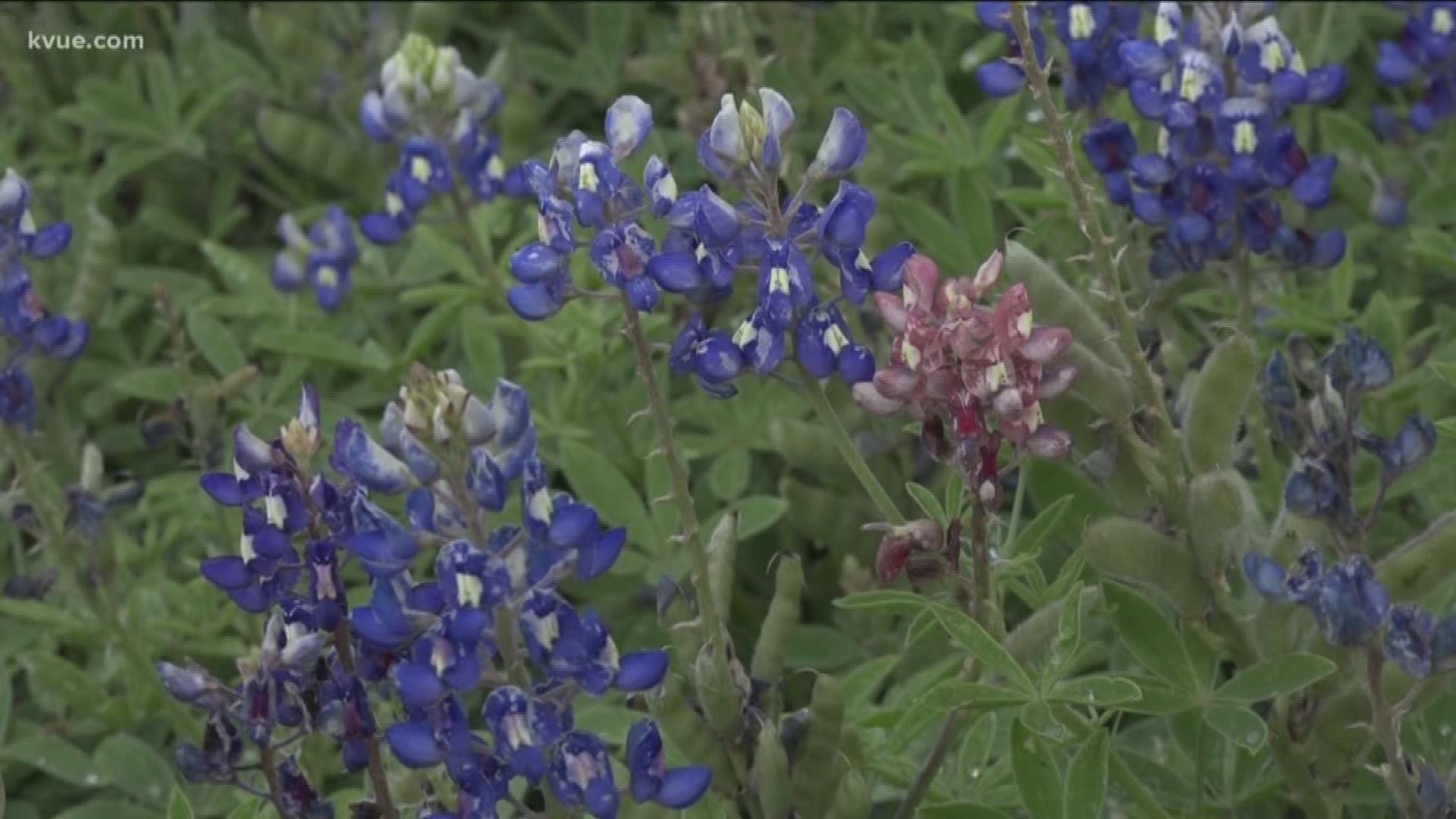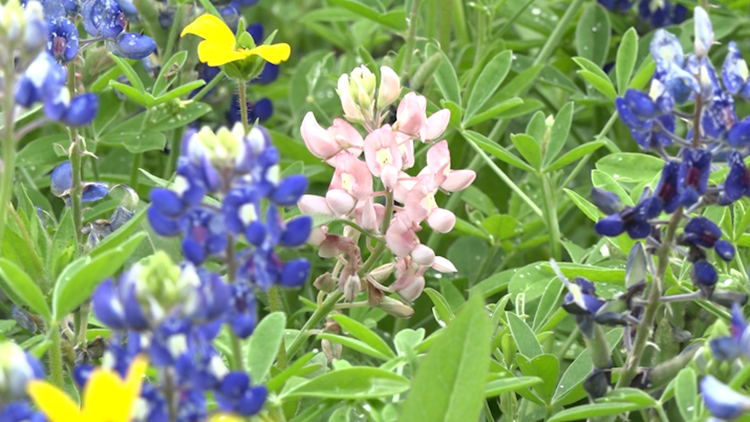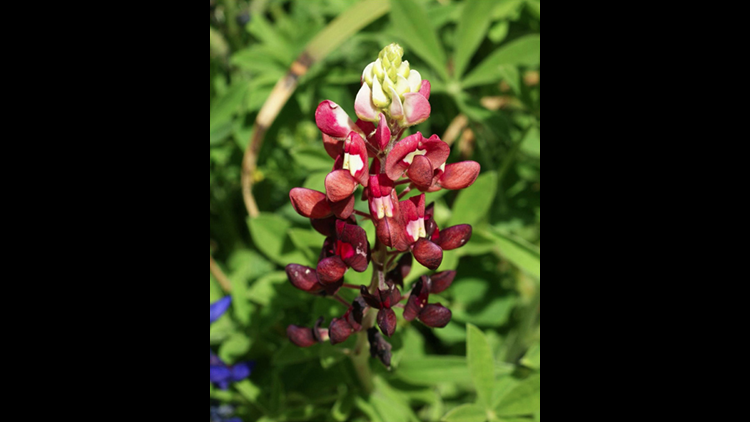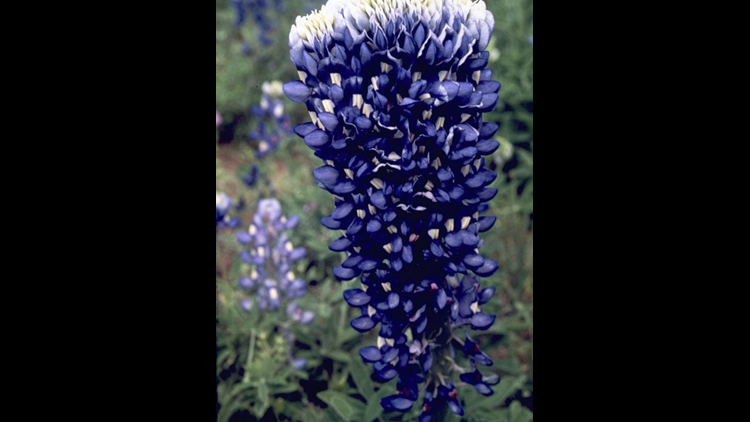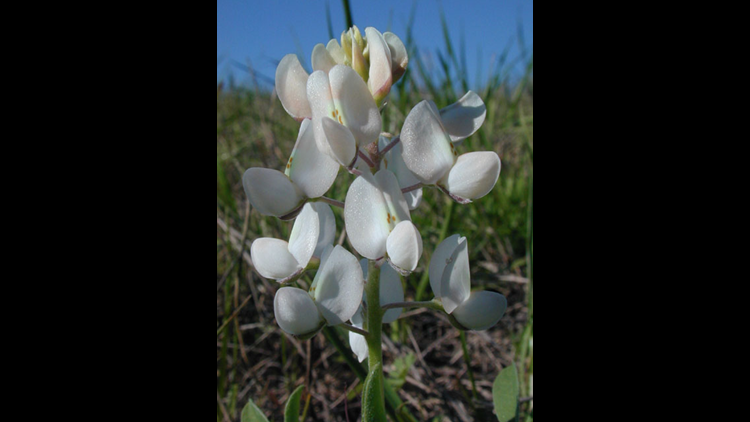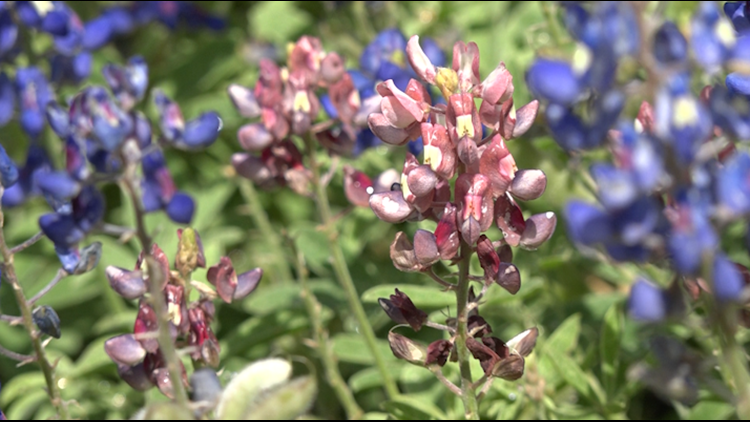AUSTIN, Texas — Bluebonnets are in full bloom -- but sometimes, they aren't actually blue.
Some of them are light pink, maroon or white.
The Director of Horticulture at the Lady Bird Johnson Wildflower Center, Andrea Delong-Amaya, said that is because of recessive genes in the bluebonnet appearing as a mutation.
Delong-Amaya said horticulturalists have selected some of those bluebonnet variations to create different flowers that have a deeper red or deeper blue color.
While you're out taking pictures, you may also see bluebonnets that are much larger than normal like this one:
According to the wildflower center, that is called "fasciation," and it's essentially the blossom equivalent of conjoined twins.
"It could be that it's a viral reaction," Delong-Amaya said. "Sometimes, you'll see variation in color, changes in the foliage. Or even in the flowers, too, which might be caused by a virus."
If you want to grow your own light pink or white bluebonnets, Delong-Amaya said you will have to buy the seeds or plants for the particular color from a nursery.
She added that the care is not different than typical bluebonnets.
PHOTOS: Bluebonnets come in different colors and sizes
PEOPLE ARE ALSO READING:

